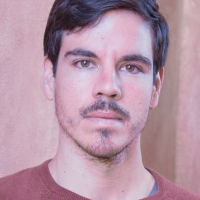With students landing jobs at big-name employers like Google, Airbnb and Twitter, Year Up is one of the few workforce development programs targeting youth from low-income backgrounds that’s generating some real excitement.
And for good reason: It’s working. According to the organization, about 90 percent of its more than 2,500 graduates in 2015 were working full-time or enrolled toward a college degree four months after their yearlong tenure with the program came to an end. Those with jobs secured an average starting salary of $36,000.
At the end of October, NBA star Chris Paul held a fundraising dinner that generated $25,000 for the program’s new hub in Los Angeles, which opened at West Los Angeles College in August. Year Up also branched out in 2016 to community colleges in Dallas and Atlanta. Next year it’ll be building out of its Boston headquarters, where the program was started by ex-Wall Street banker Gerald Chetavian in 2000, to set up a new location in Roxbury Community College.
It’s part of an ongoing strategy that will see the program shift more and more of its brick-and-mortar locations to community colleges over the coming years, replacing the old model of renting out classroom space in what Caitlin MacDonald, executive director of the Los Angeles program, describes as either downtown areas or financial districts.
“Our other model was somewhat limiting,” MacDonald says. Being in a downtown area means rent costs are generally higher, and the program depends on students commuting, usually from outer neighborhoods, to the city center. “Los Angeles just isn’t made for that,” she says, noting the city’s massive sprawl that precludes it from having any easy-to-define central area.
Community colleges also don’t charge Year Up rent because with a guarantee that students will land an internship at a local, white-collar employer, the program drives up college enrollment. It also means Year Up doesn’t have to hire instructors.
Then there’s the fact that most low-income communities, or communities with high concentrations of poverty, rarely share the same ZIP code as a city’s skyscrapers. Across the country, this new type of partnership has cut the costs per student down to about one-third of what they are in the program’s hub locations.
“What’s great about this model is that we can be on multiple campuses throughout the country,” says MacDonald. “It really does allow us to serve different geographies of students.” Year Up currently has 18 locations throughout the country, and has doubled its presence in metro areas like Seattle and Washington, D.C.
The program focuses on wedging open an entry into the high-demand, high-paying field of information technology for people from low-income backgrounds. Students who get accepted into the Year Up program go through six months of business and IT training, and then on to a six-month internship in a local tech-related job. They also get about $10,000 in stipend cash to cover the cost of living during that year.
With this new model, motivated students from low-income families have to agree to an extra commitment: enrolling in the community college where the program is located.
Originally, students would finish Year Up with about 27 college credits in business and IT curriculum that they could then transfer toward getting a degree post-internship. Now it’s expected that they’ll have to commit to finishing up an associate’s degree if they want to be considered for the program.
“I think it offers this great opportunity, because by the time they’re through the application process, whether they’re admitted or not [to the Year Up program], they’ll be admitted in West LA college,” says MacDonald. “During the second semester, they’re working [at their internships] for about 35 hours a week while they take a few courses at the college, so they’re learning how to become professionals.”
She says she can’t foresee a reason why students would opt out of enrolling in the community college but just take the Year Up program. If there is some overlap in classes at the community college with credits they’ve already received, such as with national summer programs in academia that help students prepare for college like the Program for Advancement of Learning (PAL), then MacDonald says they’d help subsidize the program.
But she also says they’d be willing to listen to and consider each student’s circumstances, and potentially shift the program to their needs as long as they can satisfy its curriculum within the same time period as every other student. At the start of the decade, a study led by Cal State Sacramento and the Institute for Higher Education Leadership found that California community colleges had a dropout rate of nearly 70 percent. While white students were obtaining associate’s degrees or transferring to four-year schools at a rate of 37 percent, only 26 percent of black students and 22 percent of Latino students did the same.
Increasing students’ access to remedial math and English courses to ease them into the demands of college was one key recommendation by the report; another found that work, family and financial constraints all played a role in whether or not students could keep up with courses in the long-term. The Community College Completion Corps reports that 54 percent of dropouts say they had to put more focus into work to support their families, while 31 percent said they couldn’t afford college.
MacDonald says Year Up recognizes those conditions, and on top of the subsidies, the program’s job-readiness training component helps teach students how to strike a work-life balance, how to manage personal finances and other time management skills.
And with an estimated 65 percent of jobs expected to require some sort of secondary certification by 2020, what could be seen by students struggling to escape poverty as an extra commitment of time, finances and responsibility through the Year Up program’s community college model may just be a way to ease them into the new normal.
“We’re having that impact by setting them up for college credits,” says MacDonald. “We’ve sort of shepherded them through the enrollment process at a school, even if Year Up isn’t the right thing for them.”
The Equity Factor is made possible with the support of the Surdna Foundation.

Johnny Magdaleno is a journalist, writer and photographer. His writing and photographs have been published by The Guardian, Al Jazeera, NPR, Newsweek, VICE News, the Huffington Post, the Christian Science Monitor and others. He was the 2016-2017 equitable cities fellow at Next City.

















